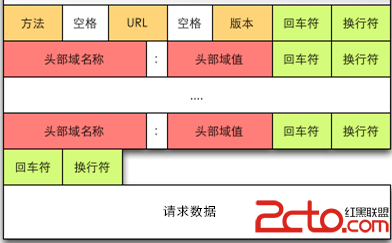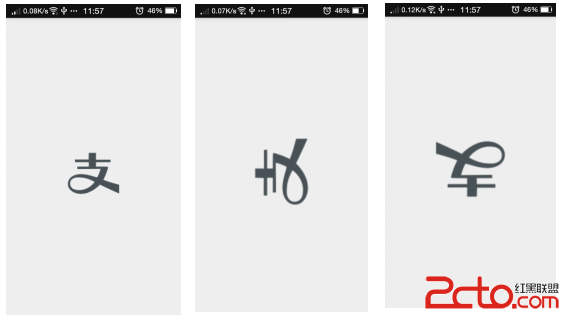編輯:關於Android編程
res/value目錄XML文件
3、分類資源文件 :
如果將所有的資源放到一個XML文件中, 會增加維護難度, 這裡將不通類型的資源放到不同的XML文件下;
-- styles.xml : 存放樣式資源;
二、Android中資源的使用
(1) Java代碼訪問清單資源
在Java代碼中通過R類獲取資源語法 :
[packageName.] R . resourceType . resourceName
(2) Java代碼訪問原生資源
Resource類 : Android資源訪問控制類, 該類提供了大量方法獲取實際資源, Resource通過 Context.getResource()方法獲得;
-- 獲取清單資源 : resource.getString(id), 根據id獲取實際資源;
-- 獲取原生資源 : resource.getassets(), 獲取AssetManager對象;
//獲取Resource資源, 這個方法在Activity中執行 Resources resources = getResources(); //獲取字符串資源 String hello = resources.getString(R.string.hello_world); //獲取圖片資源 Drawable luncher = resources.getDrawable(R.drawable.ic_launcher);
@ [packageName : ] resourceType / resourceName
三、字符串 顏色 尺寸 數組資源的使用情況
(1) 幾種資源的目錄引用名稱
字符串資源 :
-- 默認目錄 : /res/values/strings.xml ;
-- 引用方式 : R.string.xxx ;
顏色資源 :
-- 默認目錄 : /res/values/colors.xml ;
-- 引用方式 : R.color.xxx ;
尺寸資源 :
-- 默認目錄 : /res/values/dimens.xml ;
-- 引用方式 : R.dimens.xxx ;
PS
顏色定義方式:
三原色 : 白光 可以分解為 紅, 綠, 藍 三種顏色的光, 紅綠藍都是最大值的時候就是白色, 三種值相等, 但不是最大值是灰色, 如果其中一種或兩種值比較大, 就會產生各種顏色的彩色;
顏色表示 : 顏色通過 紅(red) 綠(green) 藍(blue) 三種顏色, 以及 透明度(alpha) 來表示的;
-- 顏色開頭 : 顏色值總是以 # 開頭;
-- 無透明度 : 如果沒有 alpha 值, 默認完全不透明;
顏色定義形式 :
-- #RGB : 紅 綠 藍 三原色值, 每個值分16個等級, 最小為0, 最大為f;
-- #ARGB : 透明度 紅 綠 藍 值, 每個值分16個等級, 最小為0, 最大為f;
-- #RRGGBB : 紅 綠 藍 三原色值, 每個值分 256個等級, 最小為0, 最大為ff;
-- #AARRGGBB : 透明度 紅 綠 藍 值, 每個值分 256個等級, 最小為0, 最大為ff;
(2)字符串 顏色 尺寸 XML文件定義
1) 字符串資源文件
字符串資源文件信息 :
-- 資源位置 : /res/values 目錄下;
-- 根元素 :
-- 子元素 :
-- name屬性 : 指定變量名稱;
-- 標簽文本 : 標簽文本就是字符串信息;
ResourceTest Settings Hello world!
#FF4000 #120A2A #00FF00 #FFFF00
16dp 16dp
4)數組資源
資源數組文件 : 通常將數組定義在 /res/values/arrays.xml文件中;
-- 根標簽 :
-- 子標簽 : ,
資源數組類型 : 數組的資源的跟標簽都是
-- 普通類型數組 : 使用作為子元素標簽;
-- 字符串數組 : 使用
-- 整數數組 : 使用
XML文件中調用數組資源 : @ [packageName :] array/arrayName ;
Java文件中調用數組資源 : [packageName . ]R.array.arrayName ;
-- 獲取實際普通數組 : TypeArray obtainTypedArray(int id), 根據普通數組資源名稱獲取實際普通數組, TypeArray類提供了getXxx(int index)方法獲取指定索引的元素;
-- 獲取字符串數組 : String[] getStringArray(int id), 根據字符串數組資源名稱獲取字符串數組;
-- 獲取整數數組 : int[] getIntArray(int id), 根據整數數組資源名稱獲取實際的整數數組;
示例 :
colors.xml
dimens.xml#F00 #0F0 #00F #0FF #F0F #FF0 #07F #70F #F70
strings.xml8dp 60dp 66dp 18sp
Hello World, ValuesResTest! 字符串,數字,尺寸,數組資源 F00 0F0 00F 0FF F0F FF0 07F 70F F70
arrays.xml
- @color/c1
- @color/c2
- @color/c3
- @color/c4
- @color/c5
- @color/c6
- @color/c7
- @color/c8
- @color/c9
- @string/c1
- @string/c2
- @string/c3
- @string/c4
- @string/c5
- @string/c6
- @string/c7
- @string/c8
- @string/c9
- Java
- Ajax
- Android
package WangLi.Resources.Values;
import android.app.Activity;
import android.content.res.Resources;
import android.content.res.TypedArray;
import android.os.Bundle;
import android.view.View;
import android.view.ViewGroup;
import android.widget.BaseAdapter;
import android.widget.GridView;
import android.widget.TextView;
public class ValuesResTest extends Activity {
/** Called when the activity is first created. */
String[] texts;
@Override
public void onCreate(Bundle savedInstanceState) {
super.onCreate(savedInstanceState);
setContentView(R.layout.main);
texts = getResources().getStringArray(R.array.string_arr);
//創建一個BaseAdapter對象
BaseAdapter ba = new BaseAdapter()
{
public int getCount()
{
return texts.length;
}
public Object getItem(int position)
{
return texts[position];
}
public long getItemId(int position)
{
return position;
}
public View getView(int position,View convertView,ViewGroup parent)
{
TextView text = new TextView(ValuesResTest.this);
Resources res = ValuesResTest.this.getResources();
//使用尺寸資源來設置文本框的高度,寬度
text.setWidth((int)res.getDimension(R.dimen.cell_width));
text.setHeight((int)res.getDimension(R.dimen.cell_height));
//使用字符串資源設置文本框的內容
text.setText(texts[position]);
TypedArray icons = res.obtainTypedArray(R.array.plain_arr);
//使用顏色資源來設置文本框的背景色
text.setBackgroundDrawable(icons.getDrawable(position));
text.setTextSize(20);
return text;
}
};
GridView grid = (GridView)findViewById(R.id.grid01);
grid.setAdapter(ba);
}
} 最後還要補充的就是還有布爾和整數資源了。
整數資源:
/res/values/integer.xml
java代碼10 20
import android.app.Activity;
import android.content.res.Resources;
import android.os.Bundle;
public class MainActivity extends Activity {
@Override
protected void onCreate(Bundle savedInstanceState) {
super.onCreate(savedInstanceState);
setContentView(R.layout.activity_main);
//獲取Resource資源, 這個方法在Activity中執行
Resources resources = getResources();
int size_1 = resources.getInteger(R.integer.size_1);
System.out.println(size_1);
}
} /res/values/bool.xml
true false
import android.app.Activity;
import android.content.res.Resources;
import android.os.Bundle;
public class MainActivity extends Activity {
@Override
protected void onCreate(Bundle savedInstanceState) {
super.onCreate(savedInstanceState);
setContentView(R.layout.activity_main);
//獲取Resource資源, 這個方法在Activity中執行
Resources resources = getResources();
boolean is_true = resources.getBoolean(R.bool.is_true);
System.out.println(is_true);
}
}
 Android網絡編程(一)HTTP協議原理
Android網絡編程(一)HTTP協議原理
前言這篇文章是這個系列的開篇,作為移動開發者,開發的應用不免會對網絡進行訪問,雖然現在已經有很多的開源庫幫助我們可以輕而易舉的訪問網絡,但是我們仍要去了解網絡訪問的原理,
 手把手教你畫一個 逼格滿滿圓形水波紋loadingview Android
手把手教你畫一個 逼格滿滿圓形水波紋loadingview Android
才沒有完結呢o( ̄︶ ̄)n 。大家好,這裡是番外篇。拜讀了愛哥的博客,又學到不少東西。愛哥曾經說過: 要站在巨人的丁丁上。 那麼今天,我們就站在愛哥的丁丁上來學習制作一款
 Android入門之ListView應用解析(一)
Android入門之ListView應用解析(一)
Android中的ListView是一個經常用到的控件,ListView裡面的每個子項Item可以使一個字符串,也可以是一個組合控件。本文先來說說ListView的實現:
 Android中實現圖片平移、縮放、旋轉同步進行
Android中實現圖片平移、縮放、旋轉同步進行
前言之前因為項目需求,其中使用到了圖片的單擊顯示取消,圖片平移縮放功能,昨天突然想再加上圖片的旋轉功能,在網上看了很多相關的例子,可是沒看到能同時實現我想要的